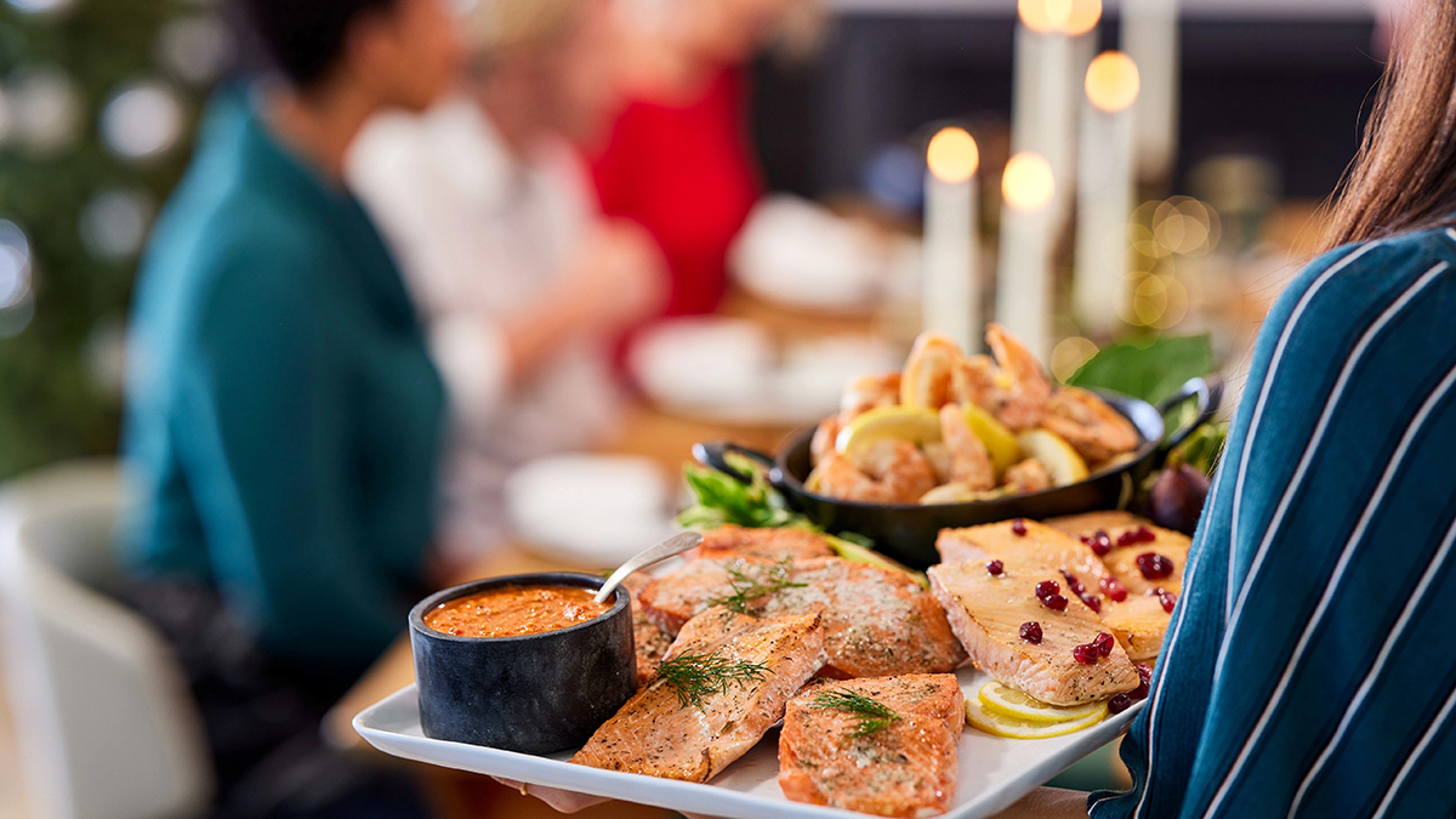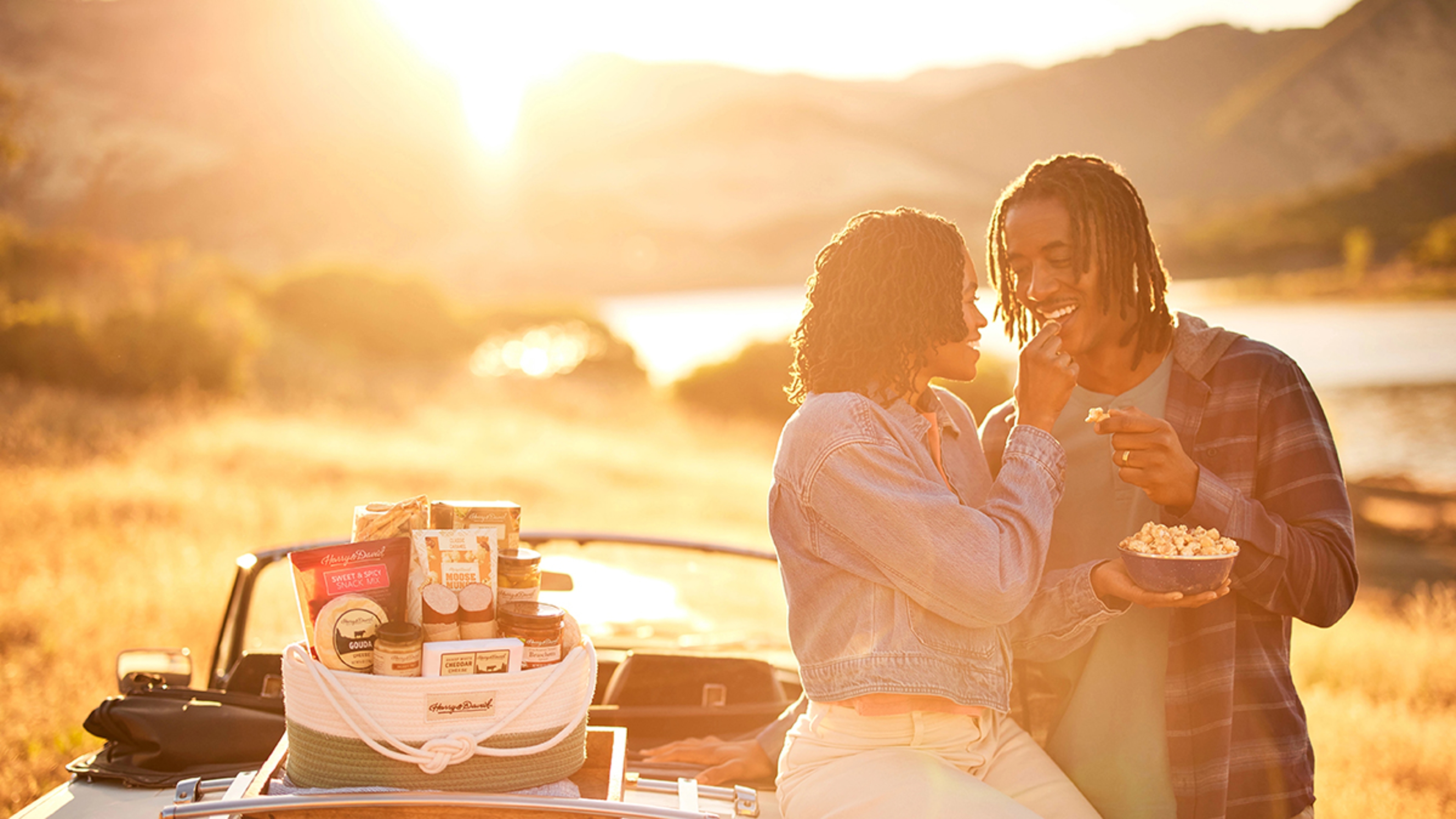Our Favorite Salmon Recipes
Your new favorite breakfast, lunch, and dinner all hail from the sea.
Feb 13, 2025
We love salmon for its protein-rich versatility at every meal. Think lox for breakfast, salmon burgers for lunch, or baked salmon for dinner. We also love the heart-healthy omega-3 fatty acids that give it a rich mouthfeel.
But before we get to our favorite salmon recipes, let's appreciate the fact that this "everyday" fish is unique: Both Atlantic and Pacific varietals of salmon are euryhaline — meaning they live in both fresh and ocean waters.
Salmon begin their life cycle in freshwater streams, then journey hundreds of miles to the ocean once they mature. Throughout the year, all six species of North American wild adult salmon — five Pacific and one Atlantic — "run" or migrate from oceans back to rivers to reproduce. During their migration, Pacific salmon are prime for catching.
Farmed Atlantic salmon vs. wild Pacific salmon
Due to overfishing and habitat destruction, Atlantic salmon are a protected species and are always sold commercially as "farmed" (bred and raised in a fishery). While salmon farmers claim farming is a sustainable method for supplying consumers with Atlantic salmon, the taste, texture, color, and health benefits of wild salmon are far superior. Salmon breeds hailing from the icy waters of the Pacific Northwest and Alaska, such as Coho, Pink, Alaska, Chum, Sockeye, and "King" (Chinook), are lower in calories, higher in calcium, zinc, and potassium, and contain higher doses of a naturally occurring antioxidant called astaxanthin from their wild ocean diet than their farmed Atlantic counterparts.
Salmon "tidbits"
When sourcing excellent quality wild salmon, it helps to know these salmon-eating "tidbits."
First, the layer of gray flesh under wild salmon's skin is a protective layer of fat that tastes sublime and is a rich source of omega-3s fatty acids. Also, canned salmon with skin and bones that are soft and safe to eat, allows you to reap the benefits of calcium-rich nutrients, and enjoy every bite. And freshly caught, individually portioned flash-frozen fillets offer recipe-ready convenience and contain all the benefits of fresh salmon.
We think salmon is a winner at every meal. Here are 10 salmon recipes to show how “wild" we are about it!
Cuban Salmon With Fresh Citrus Slaw
Cuban Salmon With Fresh Citrus Slaw
Shop : Cushman's HoneyBells® Heritage Box from Harry & David
Baking wild salmon fillets is a quick method for easy cleanup, and it also renders the fillets tender and buttery while also crisping their skin! Before baking, dust thick fillets with a zesty Cuban spice mix of cumin, coriander, and garlic, then serve with a hearty cabbage slaw made with sweet Cushman's HoneyBells. The warm aroma of the spices will keep your kitchen smelling delicious!
Shop : Cushman's HoneyBells® Heritage Box from Harry & David
BBQ Salmon
BBQ Salmon
Shop : Pick 3 BBQ Sauces from Harry & David
Baste seasoned salmon fillets in any number of sauces, with flavors ranging from light Pear Balsamic Vinaigrette to fruit-forward Pineapple Mango and Raspberry Chipotle and rich Bacon Chipotle. These magnificent marinades will change up your repertoire, and when you serve it with a seasonal salad, you'll have a delicious salmon meal every time.
Shop : Pick 3 BBQ Sauces from Harry & David
Nova Lox Crostini With Goat Cheese
Nova Lox Crostini With Goat Cheese
You may use “lox" and “smoked salmon" interchangeably, but true lox is short for “belly lox," referring to a salmon belly that was salt cured in an old-world tradition. Modern-day Nova lox refers to a process of salt-curing salmon and later cold smoking it in the practice of Nova Scotia. No matter what you prefer, slice either one thinly and drape it over tangy goat cheese on toast for this melt-in-your-mouth, slightly salty, creamy, and smoky crostini.
Smoked Salmon Eggs Benedict
Smoked Salmon Eggs Benedict
Shop : Northwest Smoked Salmon from Harry & David
Move over BEC! Wolferman's Signature English Muffins and salmon shine in this twist on a classic Eggs Benedict. Adding smoked salmon over poached eggs and easy blender-made hollandaise sauce will make this rich and creamy brunch dish your new weekend favorite.
Shop : Northwest Smoked Salmon from Harry & David
Smoked Salmon Chowder
Smoked Salmon Chowder
This single-serving gluten-free fish chowder — soups thickened with cream or flour — is packed with alder-smoked wild Alaskan sockeye salmon and loaded with red potatoes, corn, herbs, and spices. It's a protein-rich way to get in on the comforting goodness of traditional seafood chowder without the work.
Grilled Salmon With Harry & David Relish
Grilled Salmon With Harry & David Relish
Shop : Pepper & Onion Relish from Harry & David
Grilling salmon is a preferred cooking method that renders a charred, slightly smoky exterior, and moist center, due to salmon's high oil content. Grill a luxurious king salmon fillet and finish it with spoonfuls of versatile gourmet relishes adding a pop of zing to offset its richness. Add your favorite grain or brown rice and round out this meal that is fit for royalty.
Shop : Pepper & Onion Relish from Harry & David
Wild Sockeye Salmon Burgers
Wild Sockeye Salmon Burgers
Get in on a great source of protein, vitamin D, and omega-3s with these “wildly" popular burgers made with wild Alaskan sockeye salmon and organic seasonings. These raw salmon patties are vacuum-packaged and cook from frozen in less than 10 minutes. Who says you need beef to make a burger bar? Offer these beauties with sliced avocado, red onion, lettuce, pickles, and your choice of spreads.
Grilled Salmon With Farmers Market Vegetables
Grilled Salmon With Farmers Market Vegetables
Vital Choice wild-caught salmon is flash-frozen at the peak of salmon season, allowing you to pair it with the best farmer's market-inspired side dishes year-round. Take chef Jonathan Waxman's advice and consider the colors, textures, and aromas in side dish compositions. For spring and summer, think chef Waxman's grilled salmon with sugar snaps and summer's zucchini, or try a blend of Brussels sprouts and bacon in this fall or winter kale salad paired with salmon.
One-Pan Salmon
One-Pan Salmon
Shop : Wild Alaskan Sockeye Salmon - skin-on, boneless, 6 oz portions (6) from Vital Choice
Silky, crispy-skinned salmon meets creamy spinach and sun-dried tomato sauce in this impressive one-pan dish. The trick to rendering a pan-crisped salmon skin is to allow the fillets to cook undisturbed, skin side down until they naturally release from the pan. Use a slotted offset spatula to flip them and keep the skin intact. Moist, rich, and loaded with flavor and texture, this salmon recipe will become a staple.
Shop : Wild Alaskan Sockeye Salmon - skin-on, boneless, 6 oz portions (6) from Vital Choice
Baked Salmon in Parchment Paper
Baked Salmon in Parchment Paper
The French call it poisson en papillote. We simply call it “fish in paper," which is a reliable and fun cooking method for salmon. Bundle the fillet in individually portioned parchment packets with your choice of quicker-cooking veggies, such as spinach, halved cherry tomatoes, green beans, asparagus, or thinly sliced potatoes, zucchini, squash, or broccoli, and bake. Voila, an all in one meal that's très magnifique.
.svg?q=70&width=384&auto=webp)

















